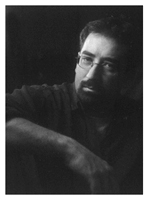 When I was presented with the opportunity to make another short film, Descent was the first thing that came to my mind. Years ago I had started to write a screenplay that centered around a woman trapped in elevator with the man she witnessed murder her best friend. For some reason, this idea had come back to me about a month or so prior to the chance to make a new film, and I couldn't get it out of my head.
When I was presented with the opportunity to make another short film, Descent was the first thing that came to my mind. Years ago I had started to write a screenplay that centered around a woman trapped in elevator with the man she witnessed murder her best friend. For some reason, this idea had come back to me about a month or so prior to the chance to make a new film, and I couldn't get it out of my head.
Each time I set out on a new project, I'm working to refine my style of production. On my very first legit short film, Wall, I storyboarded every shot and broke down each storyboard mathematically so that I knew exactly what lens and exactly where to put the camera for each shot. Over the years, especially working as a cinematographer for other directors, I learned that storyboarding isn't always the answer. Unless you have a very complicated action or special effects sequence that needs to be communicated with dozens of departments, I don't like storyboards. My style has evolved to primarily working with the actors on the set to find the best shots and blocking. Even with that approach in mind, I prepare as much as possible in advance.  I make dubious shot breakdowns and conceptual notes in pre-production to keep myself on track during the chaos of shooting. The general idea is to do as much homework in pre-production as possible and then basically let it all go and work from instinct on the set. If I've done my homework properly, then my instincts and reactions to what is happening at any given moment on the set will come organically from the original plan and structure. You don't always get the chance to execute every idea you have. In the reality of production, especially that on a very tight schedule, often the more 'wishlist' kind of ideas go out the window. My responsibility as a director is to get my 'vision' of the film on the screen, but it is also do that in a realistic fashion; on schedule and on budget. Having been a cinematographer and producer for other directors has made me a rather pragmatic, but efficient, director myself.
I make dubious shot breakdowns and conceptual notes in pre-production to keep myself on track during the chaos of shooting. The general idea is to do as much homework in pre-production as possible and then basically let it all go and work from instinct on the set. If I've done my homework properly, then my instincts and reactions to what is happening at any given moment on the set will come organically from the original plan and structure. You don't always get the chance to execute every idea you have. In the reality of production, especially that on a very tight schedule, often the more 'wishlist' kind of ideas go out the window. My responsibility as a director is to get my 'vision' of the film on the screen, but it is also do that in a realistic fashion; on schedule and on budget. Having been a cinematographer and producer for other directors has made me a rather pragmatic, but efficient, director myself.
To get an idea into how I work with the script and my shots on set, you can look at these sample script pages.



